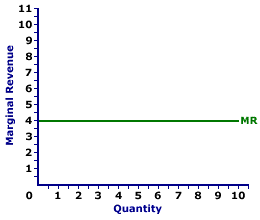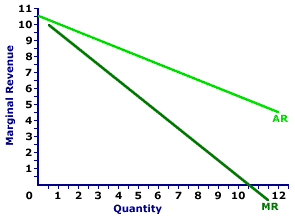
|
|
SOCIAL SECURITY: A system for providing financial assistance to the poor, elderly, and disabled. The social security system in the United States was established by the Social Security Act (1935) in response to the devastating problems of the Great Depression. Our current Social Security system has several parts. The first part, Old Age and Survivors Insurance (OASI) is the one the usually comes to mind when the phrase "Social Security" comes up. It provides benefits to anyone who has reached a certain age and who has paid taxes into the program while employed. It also provides benefits to qualified recipients survivors or dependents. The second part of the system is Disability Insurance (DI), which provides benefits to workers and their dependents in the case of physical disabilities that keeps them from working. The third part is Hospital Insurance (HI), more commonly termed medicare. Medicare provides two types of benefits, hospital coverage for anyone in the OASI part of the system and optional supplemental medical benefits that require a monthly insurance premium. The last part of the social security system is Public Assistance (PA), which is the official term for welfare and is covered under it's own heading.
Visit the GLOSS*arama
|
|


|

|
                           MARGINAL REVENUE CURVE: A curve that graphically represents the relation between the marginal revenue received by a firm for selling its output and the quantity of output sold. A firm maximizes profit by producing the quantity of output found at the intersection of the marginal revenue curve and marginal cost curve. The marginal revenue curve for a firm with no market control is horizontal. The marginal revenue curve for a firm with market control is negatively sloped and lies below the average revenue curve. A marginal revenue curve is the graphical relation between the marginal revenue a firm receives from production and the quantity of output produced. The marginal revenue curve reflects the degree of market control held by a firm. For a perfectly competitive firm with no market control, the marginal revenue curve is a horizontal line. Because a perfectly competitive firm is a price taker and faces a horizontal demand curve, its marginal revenue curve is also horizontal and coincides with its average revenue (and demand) curve.For firms with more market control, especially monopoly, the average revenue curve is negatively-sloped. Because a firm with market control is a price maker and faces a negatively-sloped demand curve, its marginal revenue curve is also negatively sloped and lies below its average revenue (and demand) curve. Perfect CompetitionPerfect competition is a market structure with a large number of small firms, each selling identical goods. Perfectly competitive firms have perfect knowledge and perfect mobility into and out of the market. These conditions mean perfectly competitive firms are price takers, they have no market control and receive the going market price for all output sold.Marginal Revenue Curve,
Zucchini Style |  |
Marginal revenue is commonly represented by a marginal revenue curve, such as the one labeled MR and displayed in the exhibit to the right. This particular marginal revenue curve is that for zucchini sales by Phil the zucchini grower, a presumed perfectly competitive firm. The vertical axis measures marginal revenue and the horizontal axis measures the quantity of output (pounds of zucchinis). Although quantity on this particular graph stops at 10 pounds of zucchinis, the nature of perfect competition indicates it could easily go higher. This curve indicates that if Phil sells the first pound of zucchinis (an increase in production from 0 to 1), then his extra revenue is $4. However, if he sells his tenth pound (an increase in production from 9 to 10), then he also receives $4 of extra revenue. Should he sell his hundredth pound (an increase in production from 99 to 100), then he moves well beyond the graph, but his marginal revenue remains at $4. Because Phil is a perfectly competitive firm, his marginal revenue curve is also his demand curve and his average revenue curve. All three curves coincide for perfect competition. Monopoly, Oligopoly, and Monopolistic CompetitionMonopoly is a market structure with a single firm selling a unique good. As the only firm in the market, monopoly is a price maker and has extensive market control, facing a negatively-sloped demand curve. If a monopoly wants to sell a larger quantity, then it must lower the price.Marginal Revenue Curve,
Medicine Style |  |
The marginal revenue curve (MR) for Feet-First Pharmaceutical is displayed in the exhibit to the right. Key to this curve is that Feet-First Pharmaceutical is a monopoly provider of Amblathan-Plus and thus faces a negatively-sloped demand curve. Larger quantities of output are only possible with lower prices.The vertical axis measures marginal revenue and the horizontal axis measures the quantity of output (ounces of medicine). Although quantity on this particular graph stops at 12 ounces of medicine, it could go higher. This exhibit displays both the marginal revenue curve (MR) and the average revenue curve (AR), which is also the demand curve. Both are negatively sloped, but the marginal revenue curve lies below the average revenue curve, which means that marginal revenue is less than average revenue (and price) for any given quantity. Although this marginal revenue curve is based on the production activity of Feet-First Pharmaceutical, a well-known monopoly firm, it can apply to any firm with market control. Monopolistic competition and oligopoly firms that also face negatively-sloped demand curves that generate comparable marginal revenue curves.

Recommended Citation:MARGINAL REVENUE CURVE, AmosWEB Encyclonomic WEB*pedia, http://www.AmosWEB.com, AmosWEB LLC, 2000-2024. [Accessed: April 29, 2024].
Check Out These Related Terms... | | | | | | | | | | | | |
Or For A Little Background... | | | | | | | | | | | | | | | |
And For Further Study... | | | | | | | | | |
Related Websites (Will Open in New Window)... | | | |
Search Again?
Back to the WEB*pedia
|



|

|
|
Only 1% of the U.S. population paid income taxes when the income tax was established in 1914.
|

|
|
"Something in human nature causes us to start slacking off at our moment of greatest accomplishment. As you become successful, you will need a great deal of self-discipline not to lose your sense of balance, humility and commitment." -- H. Ross Perot
|

|
MGF
Moment Generating Function
|

|
|
Tell us what you think about AmosWEB. Like what you see? Have suggestions for improvements? Let us know. Click the User Feedback link.
User Feedback
|


|


